This article was medically reviewed by Mohiba Tareen, MD. Mohiba Tareen is a board certified Dermatologist and the founder of Tareen Dermatology located in Roseville, Maplewood and Faribault, Minnesota. Dr. Tareen completed medical school at the University of Michigan in Ann Arbor, where she was inducted into the prestigious Alpha Omega Alpha honor society. While a dermatology resident at Columbia University in New York City, she won the Conrad Stritzler award of the New York Dermatologic Society and was published in The New England Journal of Medicine. Dr. Tareen then completed a procedural fellowship which focused on dermatologic surgery, laser, and cosmetic dermatology.
There are 17 references cited in this article, which can be found at the bottom of the page.
This article has been viewed 72,276 times.
Getting a burn is never fun, and it can also be a serious medical issue. Burns damage the skin, which acts as a protective barrier for your body, and can put you at risk for an infection. If your burn becomes infected, you need immediate medical attention and may require treatment from a medical professional. For this reason, they must be treated by a doctor. In some cases, you may need to go to the hospital for care, but for minor burns and infections, you may be able to treat it at home with medication and soothing care.
Steps
Getting Medical Treatment
-
1Visit a doctor. If you believe your burn is infected, see your doctor immediately for treatment. They will prescribe you medication and give you instructions to care for the wound at home. If the doctor determines that the infection is severe, you may need treatment at a hospital.[1]
- Signs that the burn is infected include:
- Fever
- Increased pain
- Redness and swelling
- Drainage of pus from the wound
- A red streak around the burn area
- If you see signs of infection, get medical care right away. An infection can develop into a serious, and sometimes life-threatening, condition.
- Signs that the burn is infected include:
-
2Get a wound culture to diagnose the infection. The type of bacteria, fungus, or virus infecting your wound determines your course of treatment. Your doctor may swab the wound and send the sample to the lab to get a wound culture. This will allow them to the organism causing the infection and determine the best antibiotic to prescribe.[2]
- Your doctor is more likely to order this test if your infection is severe or chronic, or to evaluate the current course of treatment.
Advertisement -
3Apply a prescription ointment. Most burns are treated with topical creams or gels that are applied directly to the wound. Which medication you use depends on what type of bacteria, fungus, or virus is infecting your wound, but common ones include Silvadene cream, mafenide acetate,[3] and silver sulfadiazine.[4]
- You shouldn’t use silver sulfadiazine if you have an allergy to sulfa. In that case, bacitracin-zinc ointment is a possible alternative.
- Oral medication, such as pills, are rarely prescribed for burns. Instead, you will apply the cream to the infection once or twice a day.
-
4Cover the wound in a silver dressing. Silver helps prevent the spread of infection, reduces inflammation, and has antibacterial properties. While your doctor may prescribe a cream with silver in it, you may also be given dressings made with silver, such as ACTICOAT, to cover your wound under the care of a wound specialist.[5]
- This dressing should be changed every three to seven days.
- Closely follow all of your wound specialist’s instructions for applying and removing the dressing.
Caring for the Burn at Home
-
1Keep the wound clean. It’s important to keep your burn wound clean, whether or not it’s infected. If it does become infected, however, you should closely follow your doctor’s advice on how to care for and clean the wound. This may or may not include washing or soaking the wound with water.[6]
- If your wound is infected and open, your doctor may ask you to soak it in warm salt water for 20 minutes, two to three times per day. You might also press a warm, wet cloth on the wound. Use warm salt water with 2 tablespoons (29.6 ml) of salt per quart of water.
- If you use a washcloth on an infected wound, be sure that it is sterilized before and after. Alternatively, you can use a sterile disposable cloth.
- Hydrotherapy is sometimes used in rehabilitation to treat wounds that are already healed, or a bit further along in healing. Your doctor might not advise using this treatment, though, as it’s controversial. It may also be risky due to pathogens in the water that could worsen any infection.[7]
-
2Apply honey to the wound. Honey may be able to provide relief by speeding up the healing of the wound, killing bacteria, and reducing swelling. Ask your doctor if you can use honey in addition to your medical treatments.[8]
-
3Use prescription ointment only. If you were given a prescription for your infection, apply it to the infection according to the label's instructions. Unless approved by your doctor, avoid using over-the-counter antibiotic creams. Any antibiotics that you use on the infection must be specific to the bacteria infecting your wound.[9]
-
4Avoid activities that irritate the wound. Depending on the severity and location of the burn, your activities may be limited. Avoid any activities that cause the burn to hurt or that might apply pressure to the wound.[10]
- For example, if the infected burn is on your hand, avoid activities that use that hand, such as typing or grabbing objects. Use your other hand instead.
-
5Take a painkiller. If the infected area hurts, you can use an over-the-counter painkiller such as acetaminophen.[11] For severe pain, your doctor may prescribe you a stronger prescription medication.
- Do not use nonsteroidal anti-inflammatory agents (NSAIDS), such as ibuprofen, as these might slow healing of the infection.[12]
Reducing the Risk of Complications
-
1Get immediate medical help if your condition worsens. Fever, vomiting, and dizziness are all symptoms of blood poisoning and toxic shock syndrome, both of which can be deadly. Call for emergency help immediately if you notice these symptoms.[13]
-
2Get a tetanus booster. Tetanus (often called “lockjaw”) is a very serious infection that causes progressive muscle spasms. It can be fatal if untreated. While tetanus usually enters the body through deeper puncture wounds, any break in the skin can put you at risk. Check with your doctor to see if your tetanus vaccination is up to date, and whether you need a booster shot.[14]
- If you had a primary tetanus immunization in the past and the wound is clean, the doctor may still recommend a booster if your last booster shot was more than 10 years ago. If the wound is dirty or tetanus-prone, you should get a booster if haven’t had one in the last 5 years.
- If you never had a primary tetanus immunization, your doctor will want to give you the first vaccine dose. You’ll need to return in 4 weeks and again in 6 months to finish the series.
- If you can’t remember when you had your last booster shot, it’s best to be cautious and get one.
-
3Undergo physical therapy. If the infected wound limits your movement, your doctor may recommend physical therapy. The physical therapy will teach you to move and exercise in ways that reduce pain and scarring. This can help increase your range of motion after the infection heals.[15]
-
4
-
5Ask your doctor before using moisturizers on the wound. Many people apply aloe and calendula gels to burns to reduce scarring, but these should not be used if an infection develops. They may irritate or worsen the infection. Once the infection is gone, ask your doctor if it is safe to start using these on your wound.[18]
- Many moisturizers contain stabilizers or preservatives that can damage your skin.[19]
Expert Q&A
-
QuestionWhat can I do if I'm suffering a lot of pain from my burn?
 Mohiba Tareen, MDMohiba Tareen is a board certified Dermatologist and the founder of Tareen Dermatology located in Roseville, Maplewood and Faribault, Minnesota. Dr. Tareen completed medical school at the University of Michigan in Ann Arbor, where she was inducted into the prestigious Alpha Omega Alpha honor society. While a dermatology resident at Columbia University in New York City, she won the Conrad Stritzler award of the New York Dermatologic Society and was published in The New England Journal of Medicine. Dr. Tareen then completed a procedural fellowship which focused on dermatologic surgery, laser, and cosmetic dermatology.
Mohiba Tareen, MDMohiba Tareen is a board certified Dermatologist and the founder of Tareen Dermatology located in Roseville, Maplewood and Faribault, Minnesota. Dr. Tareen completed medical school at the University of Michigan in Ann Arbor, where she was inducted into the prestigious Alpha Omega Alpha honor society. While a dermatology resident at Columbia University in New York City, she won the Conrad Stritzler award of the New York Dermatologic Society and was published in The New England Journal of Medicine. Dr. Tareen then completed a procedural fellowship which focused on dermatologic surgery, laser, and cosmetic dermatology.
FAAD Board Certified Dermatologist You can try taking an over-the-counter pain reliever to ease some of the pain, but you may need to contact your doctor if it's persistent.
You can try taking an over-the-counter pain reliever to ease some of the pain, but you may need to contact your doctor if it's persistent.
References
- ↑ https://my.clevelandclinic.org/health/diseases/12063-burns
- ↑ https://www.ncbi.nlm.nih.gov/pmc/articles/PMC4790211/
- ↑ https://www.drugs.com/monograph/mafenide.html
- ↑ https://medlineplus.gov/druginfo/meds/a682598.html
- ↑ https://www.ncbi.nlm.nih.gov/pmc/articles/PMC2676636/
- ↑ https://www.nhs.uk/common-health-questions/accidents-first-aid-and-treatments/how-do-i-clean-a-wound/
- ↑ https://www.cdc.gov/healthywater/other/medical/hydrotherapy.html
- ↑ https://www.ncbi.nlm.nih.gov/pmc/articles/PMC4158441/
- ↑ http://emedicine.medscape.com/article/213595-treatment
- ↑ https://msktc.org/burn/factsheets/Exercise-After-Burn-Injury
- ↑ Mohiba Tareen, MD. FAAD Board Certified Dermatologist. Expert Interview. 26 March 2020.
- ↑ https://www.ncbi.nlm.nih.gov/pubmed/23662318
- ↑ http://www.nhs.uk/Conditions/Burns-and-scalds/Pages/Complications.aspx
- ↑ https://www.cdc.gov/tetanus/about/prevention.html
- ↑ https://msktc.org/burn/factsheets/Understanding_Burn_Injury
- ↑ https://health.clevelandclinic.org/blisters-causes-treatments-and-why-you-should-never-pop-them/
- ↑ https://www.uofmhealth.org/health-library/aa2967
- ↑ https://msktc.org/burn/factsheets/Understanding_Burn_Injury
- ↑ Mohiba Tareen, MD. FAAD Board Certified Dermatologist. Expert Interview. 26 March 2020.
About This Article
If your burn has become more red, swollen, painful, or is leaking pus, visit your doctor immediately to treat the infection. Generally, they’ll give you antibiotics to treat the infection and advise how to look after your wound at home. Follow the label for any ointment you’re prescribed, which will keep your burn sterile and kill bacteria. You may also be advised to soak your burn in warm salt water for 20 minutes a few times a day. If blisters and scabs start to form around your burn, leave them alone, since picking them can lead to infection and scarring. If your symptoms get worse at any time, seek immediate medical help. For more tips from our Medical co-author, including how to use honey to disinfect your burn, read on!




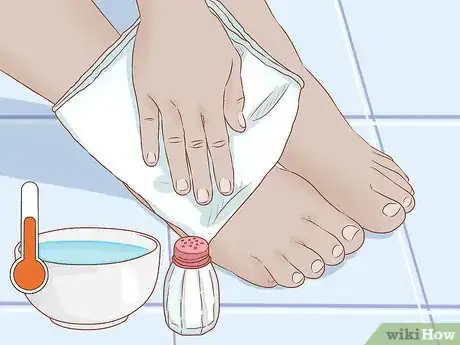
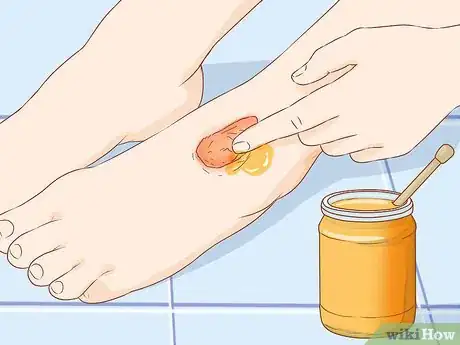
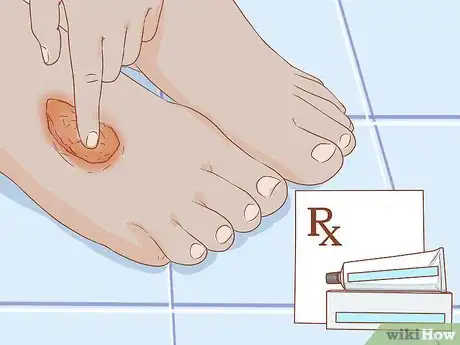



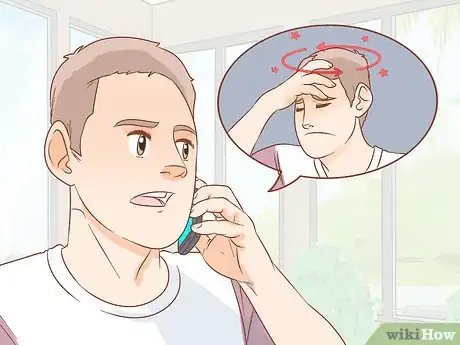
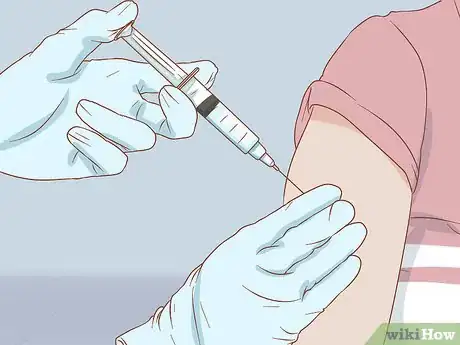

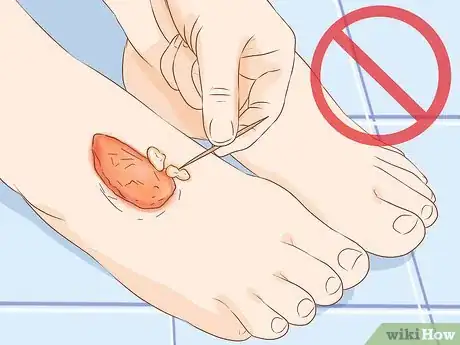

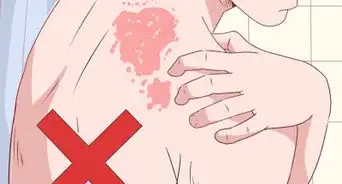




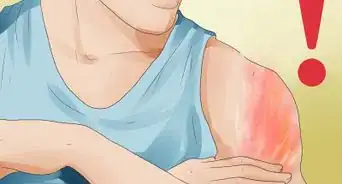


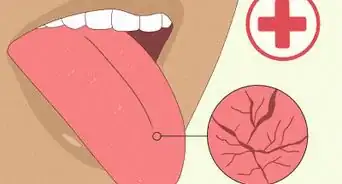

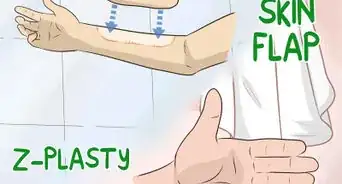


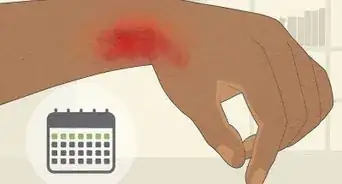






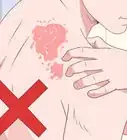

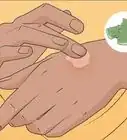




































Medical Disclaimer
The content of this article is not intended to be a substitute for professional medical advice, examination, diagnosis, or treatment. You should always contact your doctor or other qualified healthcare professional before starting, changing, or stopping any kind of health treatment.
Read More...